| Weight | 1 lbs |
|---|---|
| Dimensions | 9 × 5 × 2 in |
| host | mouse |
| isotype | IgG |
| clonality | monoclonal |
| concentration | concentrate, predilute |
| applications | IHC |
| reactivity | human |
| available size | 0.1 mL, 0.5 mL, 1 mL concentrated, 7 mL prediluted |
rabbit anti-EZH2 monoclonal antibody (ZR150) 6179
Price range: $160.00 through $528.00
Antibody summary
- Rabbit monoclonal to EZH2
- Suitable for: Immunohistochemistry (formalin-fixed, paraffin-embedded tissues)
- Reacts with: Human
- Isotype:IgG
- Control: Breast carcinoma
- Visualization: Nuclear
- 0.1, 0.5, 1.0 mL concentrated, 7 mL prediluted
rabbit anti-EZH2 monoclonal antibody ZR150 6179
| target relevance |
|---|
| Protein names Histone-lysine N-methyltransferase EZH2 (EC 2.1.1.356) (ENX-1) (Enhancer of zeste homolog 2) (Lysine N-methyltransferase 6) |
| Gene names EZH2,EZH2 KMT6 |
| Protein family Class V-like SAM-binding methyltransferase superfamily, Histone-lysine methyltransferase family, EZ subfamily |
| Mass 85363Da |
| Function FUNCTION: Polycomb group (PcG) protein. Catalytic subunit of the PRC2/EED-EZH2 complex, which methylates 'Lys-9' (H3K9me) and 'Lys-27' (H3K27me) of histone H3, leading to transcriptional repression of the affected target gene. Able to mono-, di- and trimethylate 'Lys-27' of histone H3 to form H3K27me1, H3K27me2 and H3K27me3, respectively. Displays a preference for substrates with less methylation, loses activity when progressively more methyl groups are incorporated into H3K27, H3K27me0 > H3K27me1 > H3K27me2 (PubMed:22323599, PubMed:30923826). Compared to EZH1-containing complexes, it is more abundant in embryonic stem cells and plays a major role in forming H3K27me3, which is required for embryonic stem cell identity and proper differentiation. The PRC2/EED-EZH2 complex may also serve as a recruiting platform for DNA methyltransferases, thereby linking two epigenetic repression systems. Genes repressed by the PRC2/EED-EZH2 complex include HOXC8, HOXA9, MYT1, CDKN2A and retinoic acid target genes. EZH2 can also methylate non-histone proteins such as the transcription factor GATA4 and the nuclear receptor RORA. Regulates the circadian clock via histone methylation at the promoter of the circadian genes. Essential for the CRY1/2-mediated repression of the transcriptional activation of PER1/2 by the CLOCK-BMAL1 heterodimer; involved in the di and trimethylation of 'Lys-27' of histone H3 on PER1/2 promoters which is necessary for the CRY1/2 proteins to inhibit transcription. {ECO:0000269|PubMed:14532106, ECO:0000269|PubMed:15225548, ECO:0000269|PubMed:15231737, ECO:0000269|PubMed:15385962, ECO:0000269|PubMed:16179254, ECO:0000269|PubMed:16357870, ECO:0000269|PubMed:16618801, ECO:0000269|PubMed:16717091, ECO:0000269|PubMed:16936726, ECO:0000269|PubMed:17210787, ECO:0000269|PubMed:17344414, ECO:0000269|PubMed:18285464, ECO:0000269|PubMed:19026781, ECO:0000269|PubMed:20935635, ECO:0000269|PubMed:22323599, ECO:0000269|PubMed:23063525, ECO:0000269|PubMed:24474760, ECO:0000269|PubMed:30026490, ECO:0000269|PubMed:30923826}. |
| Catalytic activity CATALYTIC ACTIVITY: Reaction=L-lysyl(27)-[histone H3] + 3 S-adenosyl-L-methionine = N(6),N(6),N(6)-trimethyl-L-lysyl(27)-[histone H3] + 3 S-adenosyl-L-homocysteine + 3 H(+); Xref=Rhea:RHEA:60292, Rhea:RHEA-COMP:15535, Rhea:RHEA-COMP:15548, ChEBI:CHEBI:15378, ChEBI:CHEBI:29969, ChEBI:CHEBI:57856, ChEBI:CHEBI:59789, ChEBI:CHEBI:61961; EC=2.1.1.356; Evidence={ECO:0000269|PubMed:22323599}; |
| Subellular location SUBCELLULAR LOCATION: Nucleus {ECO:0000269|PubMed:12101246, ECO:0000269|PubMed:14532106, ECO:0000269|PubMed:15231737, ECO:0000269|PubMed:9584199}. Note=Localizes to the inactive X chromosome in trophoblast stem cells. {ECO:0000250|UniProtKB:Q61188}. |
| Tissues TISSUE SPECIFICITY: In the ovary, expressed in primordial follicles and oocytes and also in external follicle cells (at protein level) (PubMed:31451685). Expressed in many tissues (PubMed:14532106). Overexpressed in numerous tumor types including carcinomas of the breast, colon, larynx, lymphoma and testis (PubMed:14532106). {ECO:0000269|PubMed:14532106, ECO:0000269|PubMed:31451685}. |
| Structure SUBUNIT: Component of the PRC2/EED-EZH2 complex, which includes EED, EZH2, SUZ12, RBBP4 and RBBP7 and possibly AEBP2. The minimum components required for methyltransferase activity of the PRC2/EED-EZH2 complex are EED, EZH2 and SUZ12. The PRC2 complex may also interact with DNMT1, DNMT3A, DNMT3B and PHF1 via the EZH2 subunit and with SIRT1 via the SUZ12 subunit. Interacts with HDAC1 and HDAC2. Binds ATRX via the SET domain (Probable). Interacts with PRAME. Interacts with CDYL. Interacts with CLOCK, BMAL1 and CRY1 (By similarity). Interacts with DNMT3L; the interaction is direct (By similarity). Interacts with EZHIP; the interaction blocks EZH2 methyltransferase activity (PubMed:30923826, PubMed:31086175, PubMed:31451685). Interacts with ZNF263; recruited to the SIX3 promoter along with other proteins involved in chromatin modification and transcriptional corepression where it contributes to transcriptional repression (PubMed:32051553). Interacts with ARMC12 (PubMed:30026490). Interacts with ZMYND8; the interaction is dependent on the presence of chromatin (PubMed:33323928, PubMed:36064715). Interacts with DDX18; this interaction inhibits the PRC2 complex (By similarity). {ECO:0000250|UniProtKB:Q61188, ECO:0000269|PubMed:10581039, ECO:0000269|PubMed:11158321, ECO:0000269|PubMed:12351676, ECO:0000269|PubMed:12435631, ECO:0000269|PubMed:15385962, ECO:0000269|PubMed:16179254, ECO:0000269|PubMed:16224021, ECO:0000269|PubMed:16357870, ECO:0000269|PubMed:18086877, ECO:0000269|PubMed:18285464, ECO:0000269|PubMed:19026781, ECO:0000269|PubMed:22009739, ECO:0000269|PubMed:30026490, ECO:0000269|PubMed:30923826, ECO:0000269|PubMed:31086175, ECO:0000269|PubMed:31451685, ECO:0000269|PubMed:32051553, ECO:0000269|PubMed:33323928, ECO:0000269|PubMed:36064715, ECO:0000269|PubMed:9499421, ECO:0000269|PubMed:9584199, ECO:0000305}. |
| Post-translational modification PTM: Phosphorylated by AKT1. Phosphorylation by AKT1 reduces methyltransferase activity. Phosphorylation at Thr-345 by CDK1 and CDK2 promotes maintenance of H3K27me3 levels at EZH2-target loci, thus leading to epigenetic gene silencing. {ECO:0000269|PubMed:16224021, ECO:0000269|PubMed:20935635}.; PTM: Sumoylated. {ECO:0000269|PubMed:18628979}.; PTM: Glycosylated: O-GlcNAcylation at Ser-75 by OGT increases stability of EZH2 and facilitates the formation of H3K27me3 by the PRC2/EED-EZH2 complex. {ECO:0000269|PubMed:24474760}. |
| Involvement in disease DISEASE: Weaver syndrome (WVS) [MIM:277590]: A syndrome of accelerated growth and osseous maturation, unusual craniofacial appearance, hoarse and low-pitched cry, and hypertonia with camptodactyly. Distinguishing features of Weaver syndrome include broad forehead and face, ocular hypertelorism, prominent wide philtrum, micrognathia, deep horizontal chin groove, and deep-set nails. In addition, carpal bone development is advanced over the rest of the hand. {ECO:0000269|PubMed:22177091, ECO:0000269|PubMed:22190405, ECO:0000269|PubMed:23239504, ECO:0000269|PubMed:26694085, ECO:0000269|PubMed:28229514}. Note=The disease is caused by variants affecting the gene represented in this entry. |
| Target Relevance information above includes information from UniProt accession: Q15910 |
| The UniProt Consortium |
Data
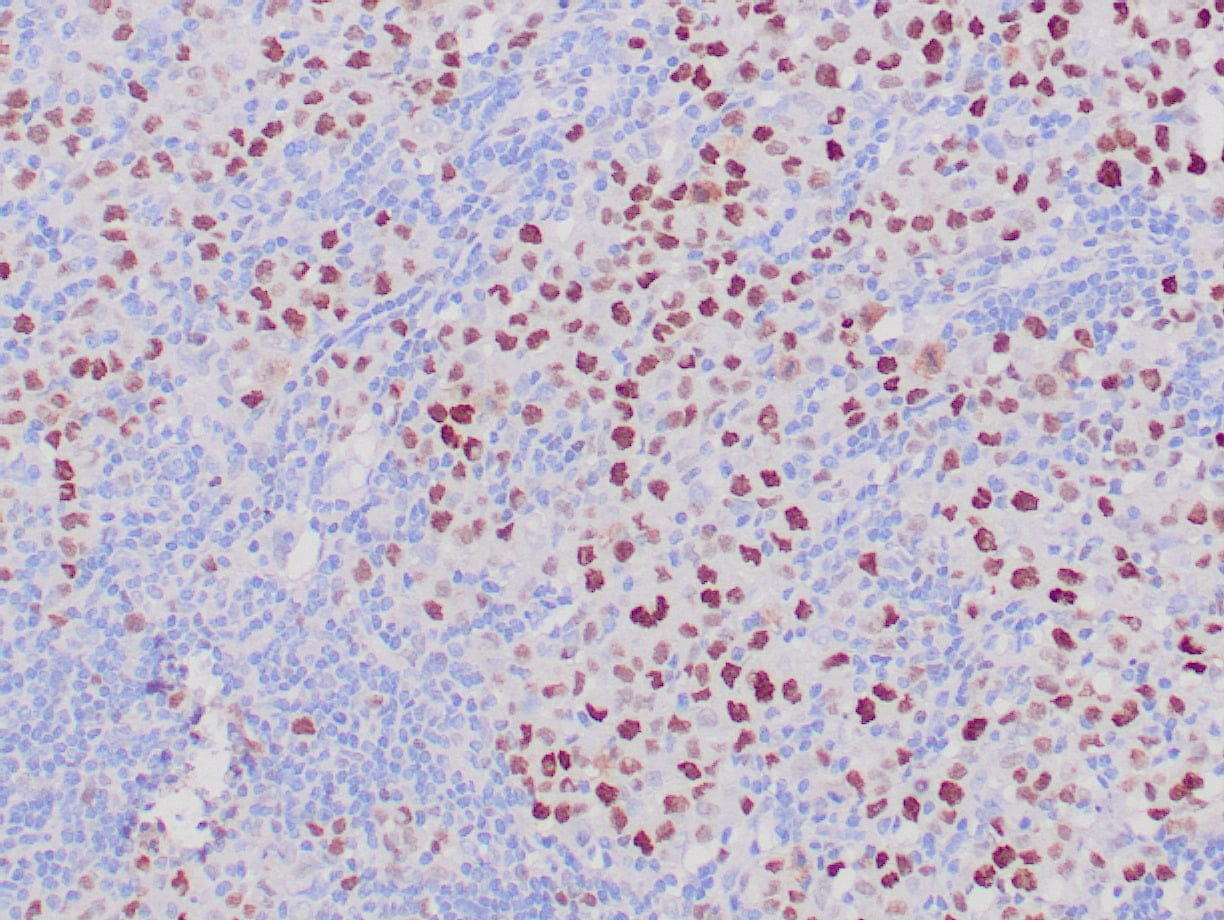 |
| Human breast ductal carcinoma stained with anti-EZH2 antibody using peroxidase-conjugate and DAB chromogen. Note nuclear staining of carcinoma cells. |
Publications
| pmid | title | authors | citation |
|---|---|---|---|
| We haven't added any publications to our database yet. | |||
Protocols
| relevant to this product |
|---|
| IHC |
Documents
| # | SDS | Certificate | |
|---|---|---|---|
| Please enter your product and batch number here to retrieve product datasheet, SDS, and QC information. | |||
Only logged in customers who have purchased this product may leave a review.
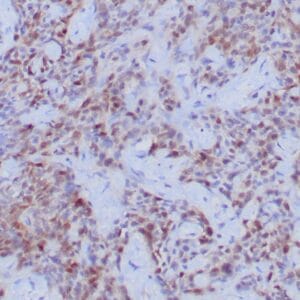
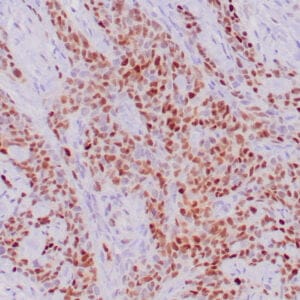
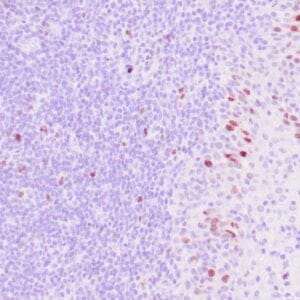
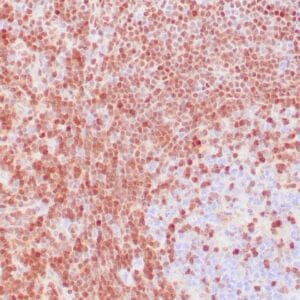
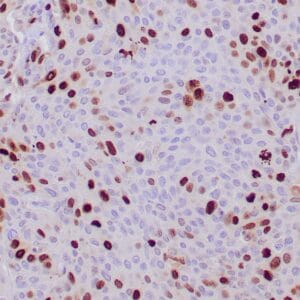
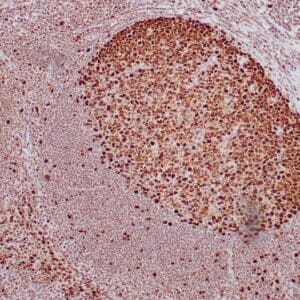

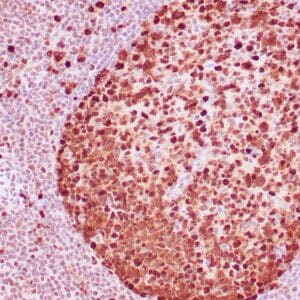
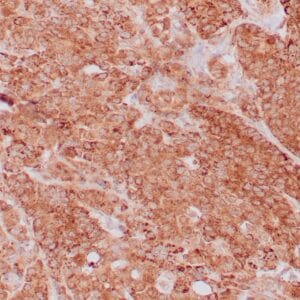


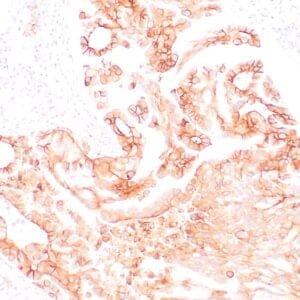
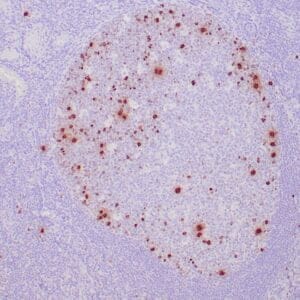

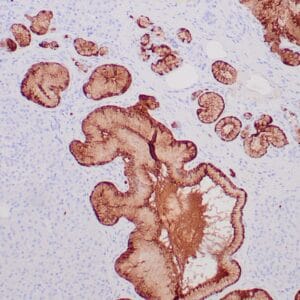
Reviews
There are no reviews yet.